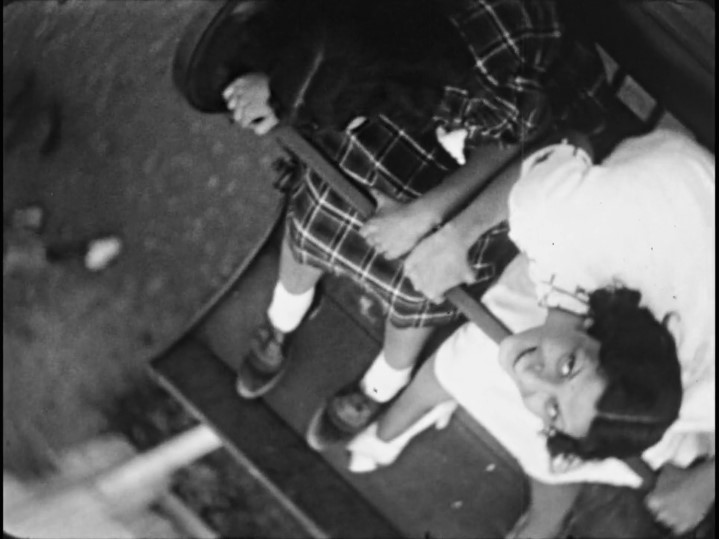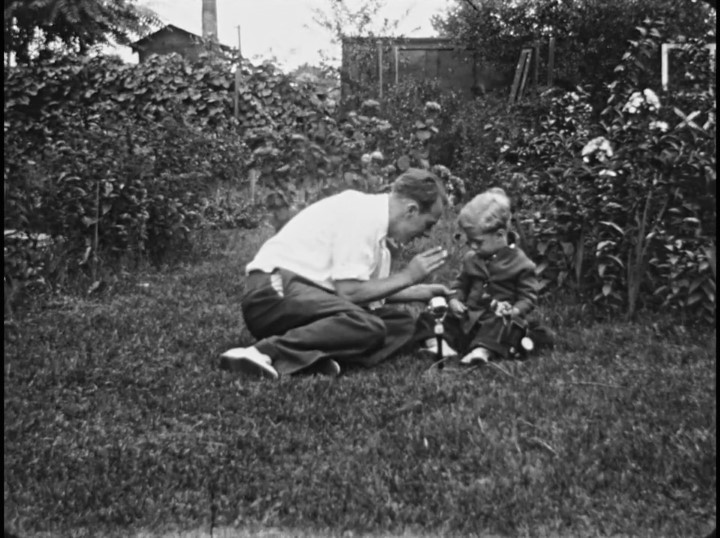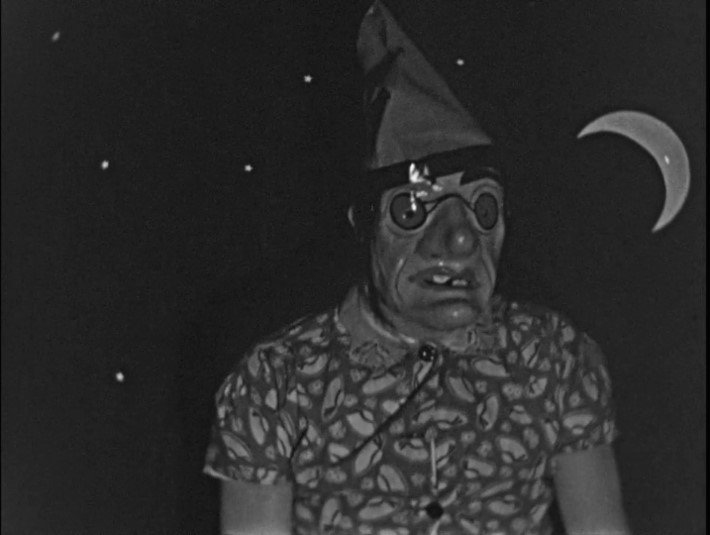
ABOUT THE FILM
Few amateur films with sound were produced in the 1930s and fewer remain extant. A charming artifact that demonstrates the expressive possibilities and technical limitations of amateur talkies, The Spider and the Fly includes a backyard Labor Day gathering, a trip to the Riverview Amusement Park, and a homemade Halloween parade of witches and ghouls.
The reversal original copy of The Spider and the Fly was acquired by the Chicago Film Society as part of a large collection purchased in 2016. It was first screened publicly at the 2016 edition of Home Movie Day, presented by CFS and Chicago Film Archives at the Chicago History Museum. It was subsequently identified as the work of Harry and Lillian Fulscher, a couple who lived on Chicago’s Northwest Side. Little is known about their lives beyond this film, but it is among the most vivid illustrations of everyday joys in the 1930s.
TECHNICAL BACKGROUND
Despite the head start enjoyed by Warner Bros’ sound-on-disc Vitaphone system, the sound-on-film Fox Movietone system introduced in 1927 soon became the dominant technical means for distributing and exhibiting talkies. Although the Movietone-style optical soundtrack was widely adopted in 35mm by 1930, it took a few more years for the technology to be adapted for 16mm use. Several 16mm projectors with optical sound readers reached the market in 1932, including Bell & Howell’s classic Filmosound. For the next few years, amateur exhibitors and collectors could buy or rent 16mm reduction prints of commercial features and shorts with optical soundtracks, but they could not make sound movies of their own.
Enter the RCA Sound Camera PR-25, the first 16mm single system camera that could record picture and sound simultaneously. Introduced in 1935, the PR-25 used single-perf 16mm reversal film to produce home movies with a reasonable approximation of synchronized sound. Film professionals would later perfect sync-sound production by capturing sound separately on a strip of magnetic tape during the shoot, mixing the sound in studio, and recording the final result to an optical soundtrack negative. By contrast, the RCA system offered few opportunities for mixing, adjusting, and correcting sound; the ‘wild track’ recorded in real-time would be permanently memorialized as-is on the film.

The sound quality of the RCA PR-25 ranged from decent to frustratingly poor. Laboratory procedures proved a major limitation for this system. A sound print of a commercial feature would typically be printed by the lab in two passes: first the picture would be printed from a duplicate picture negative, then the sound from an optical soundtrack negative. The two passes allowed the lab to independently adjust density of picture and sound to achieve the best result. RCA Sound Camera films were afforded no such luxury: these films were printed in a single pass without any means of isolating or optimizing anything. As reversal originals (i.e., camera films that were developed and then re-processed to yield a positive print without producing a negative along the way) the lab could not evaluate the negative and make grading adjustments when producing the film print; the camera original and the final print were effectively one and the same.
Traditionally a footnote in histories of amateur film, the RCA PR-25 suffered from poor sales and was judged a dead end by RCA Victor within a few years. (With the introduction of the cheaper 8mm in 1932, 16mm filmmaking remained the province of the well-to-do, 16mm sound filmmaking even more so. The RCA PR-25 was essentially a rich man’s toy introduced at a time when most Americans’ pocketbooks were still constricted by the Great Depression.) Several RCA engineers responsible for developing the Sound Camera soon jumped ship and formed their own company, the Berndt-Maurer Corporation. The new company would eventually release the Auricon, an RCA PR-25 descendant that would become the 16mm sync-sound standard for everyone from local TV reporters to Andy Warhol.
ABOUT THE PRESERVATION
The Spider and the Fly was preserved by Chicago Film Society at Colorlab in 2018 with the support of the National Film Preservation Foundation. Due to extreme shrinkage that made traditional photochemical duplication dangerous, the reversal original was scanned and stabilized in 2K before being returned to a 16mm duplicate negative. Some minor digital sound restoration work was performed to amplify a weak signal in the original track. New 16mm prints were created from the new preservation elements.
EXHIBITION HISTORY
The restored version of The Spider and the Fly has been exhibited at the following locations:
12 Oct 2019 – USC Doheny Memorial Library – Los Angeles, CA
19 Oct 2019 – Chicago History Museum – Chicago, IL
15 Nov 2019 – Association of Moving Image Archivists Annual Conference – Baltimore, MD
AVAILABILITY
The new 16mm print of The Spider and the Fly is available for screening to any venue with an archival-quality projection booth. Please write to info@chicagofilmsociety.org with screening inquiries.

